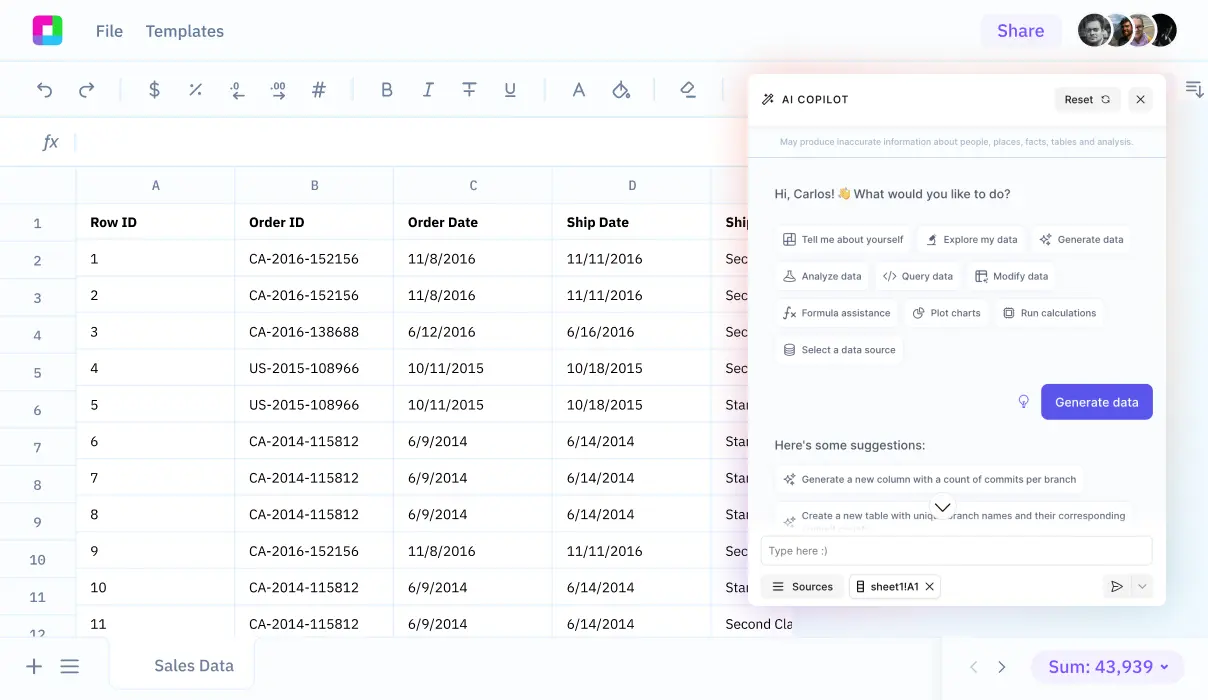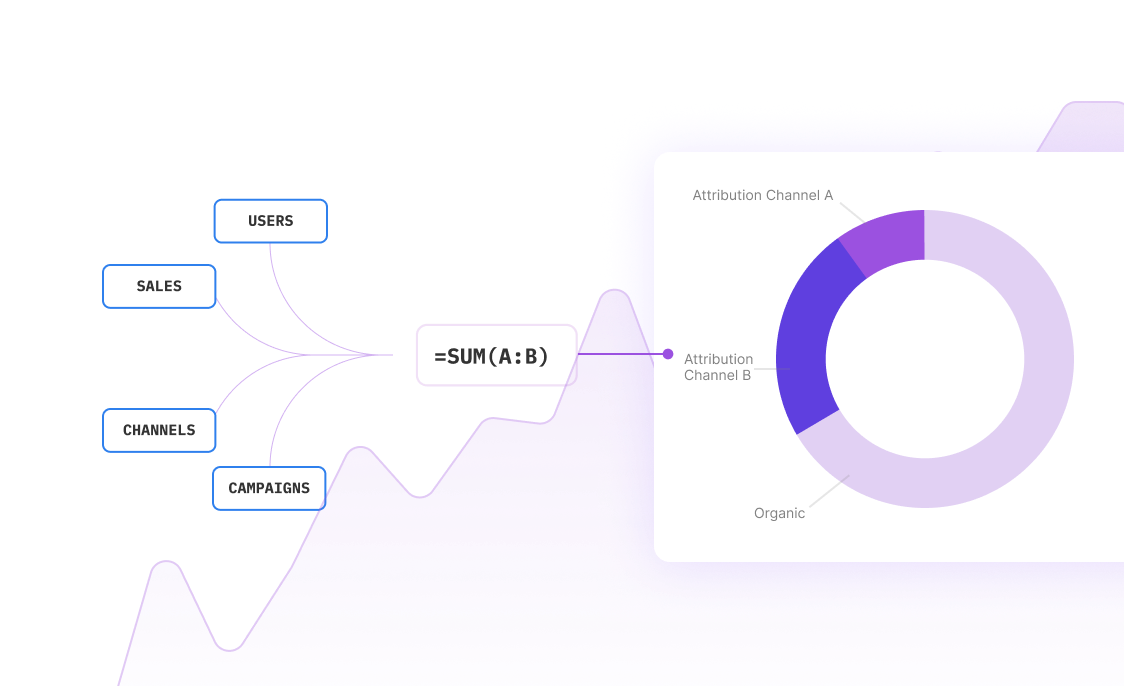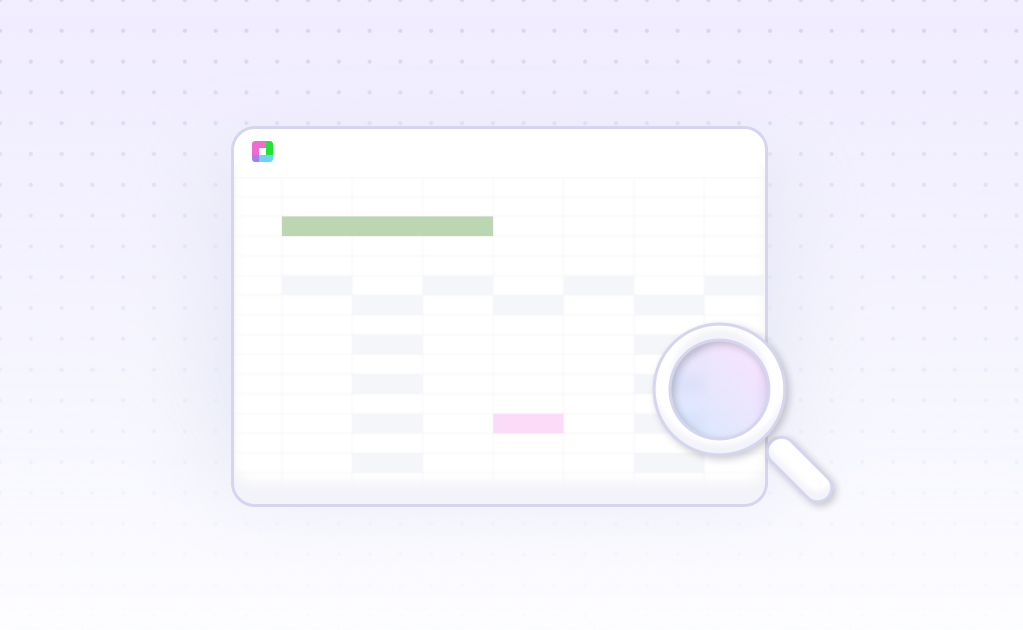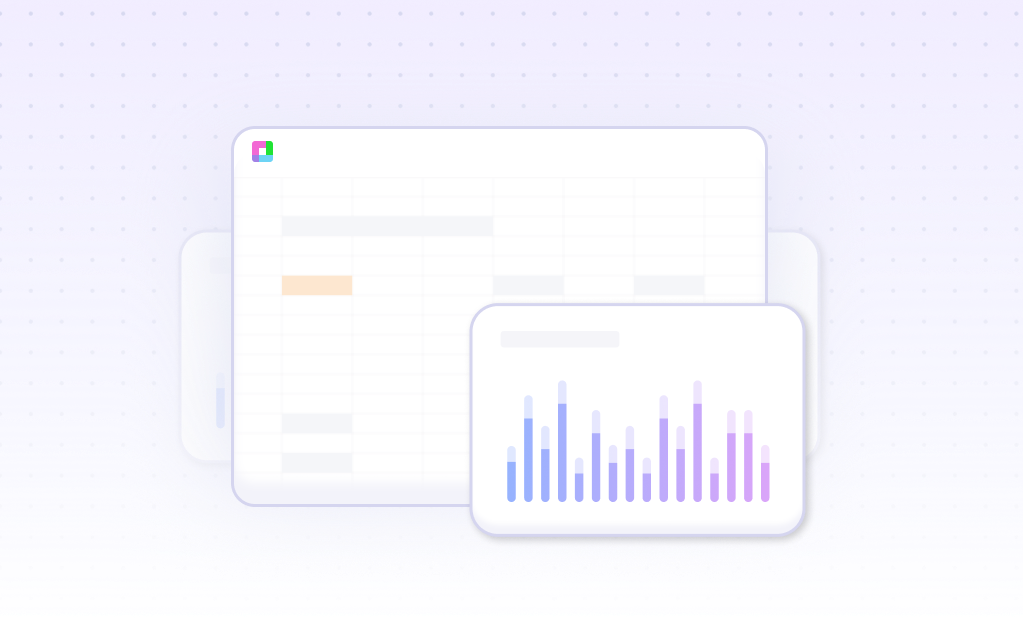
Introduction
Operating cycle analysis measures how long it takes a company to convert raw materials into cash. This critical financial metric combines days of inventory and receivables. While Excel templates exist for calculating operating cycles, modern AI-powered alternatives like Sourcetable streamline the process.
Sourcetable combines Excel's functionality with AI-driven automation to simplify financial analysis. The platform generates formulas automatically, creates interactive charts, and integrates with SQL and Python for advanced analysis. Unlike traditional spreadsheets, Sourcetable requires no formula expertise to perform complex calculations.
For operating cycle analysis and other financial metrics, Sourcetable provides AI-driven automation and insights that eliminate manual spreadsheet work.
Why Sourcetable Is Superior for Financial Cycle Analysis
Sourcetable matches Excel's core functionality while offering advanced AI capabilities at no cost. Both platforms provide spreadsheet analytics, audit trails, calculators, charting, and multi-user collaboration. However, Sourcetable's AI-powered features automate workflow, data cleaning, and report generation while minimizing human error.
Cost and Efficiency Benefits
Unlike Excel's GPT integration at $6.99 monthly, Sourcetable is free while delivering comprehensive financial analysis tools. The platform's AI automation handles data categorization, scenario analysis, and financial forecasting, allowing teams to focus on strategy rather than repetitive tasks.
Advanced Analytics Capabilities
Sourcetable's AI tools analyze complex datasets faster than traditional Excel methods, uncovering previously missed insights. The platform excels at tail spend analysis, identifying cost-saving opportunities across categories and items while optimizing supplier relationships.
Integration and Accessibility
Sourcetable offers the same extensive integration options as Excel's GPT features, connecting with popular platforms like Airtable, Google Sheets, and HubSpot. The platform is accessible across all major devices and operating systems, with business hours support ensuring reliable assistance.
Benefits of Financial Cycle Analysis with AI-Powered Spreadsheets
Financial cycle analysis provides critical insights into economic impacts and helps detect macrofinancial imbalances. This analytical approach enables organizations to identify and correct financial cycle excesses before they become problematic.
Enhanced Analysis with AI-Powered Spreadsheets
AI-powered spreadsheet tools automate manual financial analysis tasks while enhancing workflows and forecasting capabilities. The technology identifies patterns in budgeting and variance analysis, providing deeper insights into performance metrics and KPIs.
These intelligent systems enable real-time interaction with financial statements and operational data. By improving data accessibility, AI-powered spreadsheets allow non-financial managers to analyze financial data independently, streamlining organizational decision-making processes.
Financial Analysis with AI-Powered Spreadsheets
Modern AI-powered financial analysis tools automate manual processes and eliminate repetitive work in financial planning and analysis. Unlike traditional Excel templates that require manual customization for visualizing financial data, AI-native solutions connect to real-time data sources and provide unified dashboards.
Automated Financial Planning
AI finance tools streamline accounting operations, bookkeeping, and controllership tasks through automated data integration. These tools connect structured and unstructured financial data into a single source of truth, enabling CFOs and analysts to make strategic decisions based on real-time insights.
Financial Visualization
Modern financial analysis platforms aggregate data from multiple sources into comprehensive dashboards, surpassing the limited visualization capabilities of traditional spreadsheet templates. This integrated approach helps finance teams track business goals and analyze performance metrics across departments.
Financial Cycle Analysis Use Cases with Sourcetable
Real-Time Recession Risk Monitoring |
Connect multiple financial databases to track recession risk indicators through Sourcetable's database integrations. Use the AI copilot to generate SQL queries for analyzing financial cycles, with models updating in near-real-time as new data flows in. |
Cross-Economy Financial Cycle Comparison |
Leverage Sourcetable's vector queries and 3D plotting capabilities to compare financial cycles across different economies. The AI assistant helps analyze multi-dimensional datasets and suggests relevant follow-up queries for deeper comparative analysis. |
Systemic Risk Assessment |
Integrate data from multiple sources to measure systemic risk through financial cycle analysis. Use Sourcetable's natural language interface to query billion-row datasets and generate automated visualizations of risk patterns. |
Macroprudential Policy Effectiveness |
Analyze the effectiveness of countercyclical capital buffers and other macroprudential policies. Utilize Sourcetable's AI-powered data transformation capabilities to process complex financial datasets and measure policy outcomes against financial cycle indicators. |
Frequently Asked Questions
What is financial cycle analysis and what variables are typically analyzed?
Financial cycle analysis examines patterns in macro-financial variables. It typically analyzes four key components: private credit, credit-to-GDP ratio, house prices, and share prices. These variables are used to construct synthetic financial cycles that can be studied over time.
What analytical methods are used in financial cycle analysis?
Financial cycle analysis uses several key methods including wavelet analysis to study cycle duration and evolution over time, VAR models to examine interactions between financial cycles and other economic factors, and analysis of lead-lag relationships between financial and business cycles.
How can Sourcetable help with financial cycle analysis compared to traditional spreadsheets?
Sourcetable offers the data organization and analysis capabilities of traditional spreadsheets while adding AI-powered features for automation and natural language processing. It can streamline financial analysis, automate calculations, create forecasts, and facilitate team collaboration, similar to Excel but with modern AI capabilities for faster and smarter analysis.
Conclusion
Excel remains a powerful tool for financial cycle analysis, offering automated calculations, data visualization, and collaborative features. Its flexibility and accuracy make it ideal for managing large volumes of financial data and calculating key ratios.
Sourcetable represents the next evolution in financial analysis, combining spreadsheet functionality with AI capabilities. By integrating with over 100 data sources and responding to natural language commands, it streamlines complex financial tasks without requiring Excel expertise. Users can perform balance sheet analysis, cash flow projections, and profitability assessments through simple AI interactions.
Experience how Sourcetable transforms financial cycle analysis - try it now at sourcetable.com/signup.
Frequently Asked Questions
If you question is not covered here, you can contact our team.
Contact Us





